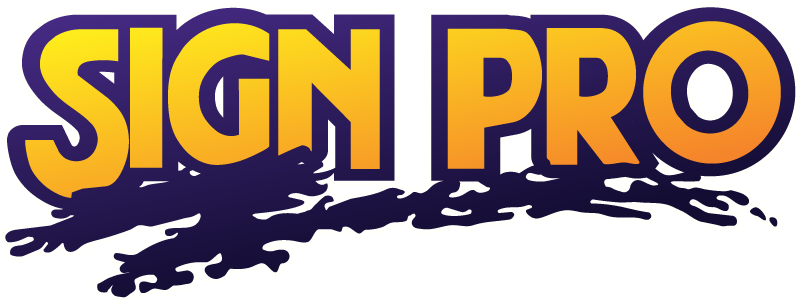DESIGN GUIDELINES
We are more than happy to create a design for you, just contact us with your ideas. If you would like to design the sign artwork yourself, please follow the guidelines below:
To provide you with the best representation of your logo on your sign or promotional product, submit your logo electronically. Depending on what your final product is will determine the type of artwork required. Call us with questions before you begin!
We can use files that were created in a variety of software programs. If you don't see your software program listed, contact us to help you determine how to submit your artwork.
Programs we support:
• Illustrator (PC) (.EPS and .AI files)
• PDF Files
• Photoshop (PC) (.JPG, .TIFF, and.PSD files)
• Omega Composer (PC) (.PLT files)
Vector Images are recommended
When supplying artwork for use in the production of large graphics, a vector image (AI or EPS) is the best choice. A vector image is composed of mathematically defined geometric shapes instead of pixels. These images can be scaled up or down without compromising the quality of the image. If your file has photographic images or complex graphics, please see the section "JPG’s and other raster files".
Correct Set-Up
Appropriate vector files include Illustrator files that have been CREATED in these programs, NOT imported into these programs. For instance, you cannot create a bitmap file in Photoshop, import it into Illustrator, save it as an .EPS file and expect that you will get a quality image when scaled up. All vector files that include text MUST have the fonts/text converted to curves/outlines. Without this step, the fonts may default to our computer's system font since we may not have the same fonts as you.
How to Save
Regular vector images can be saved in the proper format and emailed to us. Larger files (especially raster files…see below) can be burned and provided to us on a CD- or DVD-ROM, transferred to us using our File Upload Page, or uploaded using a file-sharing service like www.dropbox.com.
JPG’s and other raster files
For raster files, (.jpg, .gif, .tiff, .psd, etc.) we accept most image formats, but for the best quality we request a 100 DPI (or above) .tiff or .psd file, with the dimensions set to the output size. For instance, if you need an 18"x24" yard sign, the file should be saved as an 18"x24" .psd or .tiff file. 100 DPI is the minimum for DPI and is fine for the majority of artwork, but if you have fine text then please save it at a maximum 300 DPI. In most cases if the original image is the size that it needs to be printed at, there is no loss in quality. However, if an image has to be sized much larger than the original file, some loss in quality can be expected.
What we prefer
If you are designing a sign with text and basic shapes, it is recommended that you set up the sign as a vector image. However, if you do not have access to a program with vector design capabilities, we might have to re-design the graphic so that it is compatible with our software. If your sign is very complex with a wide range of colors, or uses photographic images, a raster image is the optimum choice. If you have questions, please call us before you begin on the design!
IMPORTANT:
Any image that is taken from a web page will not print out with great reproduction. The reason for this is that most web images run about 72 dpi and the graphics are sized to fit a monitor. This is good enough for a computer screen, but not for print. It’s impossible to make a 1”x2” image from a web site look acceptable as a 2’x4’ sign. However, we might be able to re-create the image for you for a fee if you do not have access to a better format. Again, call with questions!
You may also email us HERE with any graphics-related questions.

